This blog is all about you and the little things that make a big impact. You are the author of your life story. So, take care of yourself like someone you love. Make time for what you believe in. and don't be afraid to put yourself first every once in a while. Know your worth and value-add. And give the world the best of you. Not what's left of you.
Don't wanna be here? Send us removal request.
Text
AI's Social Impact: Transforming Industries and Empowering Society

Artificial Intelligence (AI) is reshaping our society and impacting various aspects of our lives. Here's an overview of AI's social impact:
1. Accessibility:
AI technologies are enhancing accessibility for individuals with disabilities. Natural language processing enables voice-controlled devices, aiding those with mobility impairments. Computer vision assists visually impaired individuals through object recognition and navigation systems.
2. Education:
AI is revolutionizing education by providing personalized learning experiences. Adaptive learning platforms use AI algorithms to tailor educational content and pacing to individual students' needs, promoting effective and engaging learning.
3. Employment and Workforce:
AI automation is transforming the job landscape, with both opportunities and challenges. While certain jobs may be automated, new job roles will emerge, requiring individuals to adapt and acquire new skills. AI can also augment human capabilities, enhancing productivity and efficiency.
4. Ethical Considerations:
AI raises ethical concerns that need to be addressed. These include issues of algorithmic bias, transparency, accountability, and privacy. Ensuring fairness and avoiding discrimination in AI systems is crucial for creating an inclusive and equitable society.
5. Healthcare:
AI has the potential to revolutionize healthcare by improving diagnostics, treatment planning, and patient care. AI-powered systems can assist in early disease detection, personalized treatment recommendations, and remote patient monitoring, leading to better health outcomes.
6. Social Services:
AI can optimize social services by analyzing vast amounts of data to identify trends and patterns, helping governments and organizations make informed decisions. AI can enhance the efficiency and effectiveness of public services such as transportation, energy management, and emergency response systems.
7. Environmental Impact:
AI plays a role in addressing environmental challenges. It helps optimize energy consumption, supports climate modeling and prediction, and aids in the development of sustainable practices across industries.
8. Safety and Security:
AI contributes to safety and security through advancements in surveillance systems, fraud detection, and cybersecurity. AI algorithms can analyze data in real-time, detect anomalies, and identify potential risks, enhancing overall safety measures.
While AI brings numerous benefits, it also requires responsible and ethical development and deployment. Collaboration among policymakers, industry leaders, and society as a whole is crucial to harness AI's potential for positive social impact while addressing challenges and ensuring the well-being and empowerment of individuals and communities.
#aisocialimpact#AIinSociety#TechEthics#ethicalai#airesponsibility#AIandSocialChange#socialinnovation#technologyimpact#aiandhumanity#socialtransformation#aiindailylife#aiandsociety#techtrendsin2023#aitrends
4 notes
·
View notes
Text
How is AI transforming every aspect of human life?
AI is transforming every aspect of human life by revolutionizing the way we work, communicate, learn, and live. Here are some key areas where AI is making a significant impact:

What is Artificial Intelligence?
Artificial Intelligence (AI) refers to the simulation of human intelligence in machines that can perform tasks requiring human-like cognitive abilities. It involves machine learning, natural language processing, computer vision, and other advanced techniques.
How does it impact every industry?
AI has the potential to revolutionize every industry by automating processes, analyzing vast amounts of data, and making intelligent predictions. It improves efficiency, enhances decision-making, and drives innovation across sectors such as healthcare, finance, manufacturing, and transportation.
How does it impact every individual?
AI impacts individuals by providing personalized experiences, virtual assistants, and smart devices. It enhances daily life through voice recognition, recommendation systems, and virtual customer support. AI-powered technologies make our lives easier, more convenient, and efficient.
AI is transforming every aspect of human life by revolutionizing the way we work, communicate, learn, and live. Here are some key areas where AI is making a significant impact:
1. Healthcare:
AI is enhancing medical diagnosis, drug discovery, and personalized treatment plans. It helps analyze vast amounts of patient data, identify patterns, and provide accurate predictions for disease prevention and early intervention.
According to Accenture, AI in healthcare could potentially save up to $150 billion annually for the U.S. healthcare economy by 2026.
The global AI in healthcare market is projected to reach $45.2 billion by 2026, growing at a compound annual growth rate (CAGR) of 44.9% from 2019 to 2026.
2. Education:
AI is revolutionizing education by enabling personalized learning experiences, adaptive tutoring, and intelligent assessment systems. It helps tailor educational content to individual student needs, track progress, and provide timely feedback for better learning outcomes.
The global AI in education market is expected to reach $3.68 billion by 2025, with a CAGR of 38.17% from 2018 to 2025.
A study by the American Institutes for Research found that AI-powered tutoring systems have a positive impact on student learning outcomes, resulting in an average percentile gain of 28 points.
3. Transportation:
AI is driving advancements in autonomous vehicles, optimizing traffic management systems, and improving transportation efficiency and safety. It enables self-driving cars, real-time navigation, and predictive maintenance, revolutionizing the way we commute and travel.
The global autonomous vehicle market is projected to reach $556.67 billion by 2026, with a CAGR of 39.47% from 2019 to 2026.
According to the National Highway Traffic Safety Administration, AI-powered advanced driver-assistance systems (ADAS) have the potential to reduce traffic fatalities by up to 94%.
4. Communication:
AI-powered language translation, natural language processing, and speech recognition technologies are transforming communication. Chatbots, virtual assistants, and language translation tools facilitate seamless cross-cultural communication and enhance accessibility.
The global AI in communication market is expected to reach $3.5 billion by 2026, growing at a CAGR of 34.7% from 2019 to 2026.
AI-powered language translation technologies have advanced significantly, with Google Translate handling more than 100 billion words daily in over 100 languages.
Virtual assistants like Siri, Alexa, and Google Assistant leverage AI to understand and respond to user commands, making voice-based communication more convenient and efficient.
5. Entertainment:
AI is reshaping the entertainment industry with personalized content recommendations, virtual reality experiences, and computer-generated imagery. It enhances user experiences, facilitates content curation, and enables immersive storytelling.
The global AI in the entertainment market is projected to reach $5.5 billion by 2026, with a CAGR of 25.4% from 2019 to 2026.
AI algorithms are used in content recommendation systems of streaming platforms like Netflix and Spotify, which account for a significant portion of their user engagement and revenue.
AI-powered computer-generated imagery (CGI) has transformed the visual effects industry, enabling the creation of realistic and immersive experiences in movies, video games, and virtual reality.
6. Finance:
AI is revolutionizing the financial industry with automated trading, fraud detection, risk assessment, and personalized financial advice. It enables efficient data analysis, real-time market insights, and improved decision-making processes.
A report by PwC estimates that AI could contribute up to $15.7 trillion to the global economy by 2030, with the financial sector being one of the largest beneficiaries.
AI-driven automated investment platforms, also known as robo-advisors, managed over $1 trillion in assets globally in 2020.
7. Smart Homes:
AI-powered smart home devices and virtual assistants, such as voice-activated speakers and smart thermostats, make our daily lives more convenient and efficient. They automate tasks, provide personalized recommendations, and create a connected and intelligent living environment.
The global smart home market is expected to reach $246.97 billion by 2027, with a CAGR of 11.6% from 2020 to 2027.
Voice-activated smart speakers, powered by AI assistants like Amazon Alexa and Google Assistant, have seen widespread adoption. As of 2021, there were over 200 million smart speakers in use worldwide.
8. Manufacturing:
AI-driven robotics and automation technologies optimize manufacturing processes, increase productivity, and improve product quality. AI-enabled machines and robots perform complex tasks, enhance precision, and enable predictive maintenance.
The global AI in manufacturing market is expected to reach $16.7 billion by 2026, growing at a CAGR of 49.5% from 2019 to 2026.
According to Deloitte, companies that invest in AI and advanced automation technologies in manufacturing can experience productivity gains of up to 30%.
AI-powered predictive maintenance can reduce equipment downtime by up to 50% and maintenance costs by up to 10-40%.
9. Agriculture:
AI is transforming agriculture by optimizing crop management, monitoring soil conditions, and predicting weather patterns. It enables precision farming techniques, reduces resource waste, and improves agricultural productivity.
The global AI in agriculture market is projected to reach $4 billion by 2026, with a CAGR of 22.5% from 2021 to 2026.
AI-powered agricultural robots and drones are expected to reach a market value of $1.3 billion by 2026.
The use of AI in agriculture can increase crop yields by up to 70%, according to a study by the International Data Corporation (IDC).
10. Cybersecurity:
AI is strengthening cybersecurity measures by detecting and preventing cyber threats, identifying anomalous behavior, and improving data protection. AI algorithms analyze large datasets to detect patterns and anomalies, enhancing security measures.
According to Gartner, by 2022, 90% of security budgets will be allocated to addressing AI-powered cyber threats.
The global AI in cybersecurity market is projected to reach $38.2 billion by 2026, growing at a CAGR of 23.3% from 2021 to 2026.
In summary:
AI is transforming every aspect of human life, from healthcare and education to transportation, communication, entertainment, finance, and beyond. Its applications are vast and diverse, revolutionizing industries, improving efficiency, and enhancing the overall human experience. As AI continues to advance, it holds immense potential to shape a future where intelligent technologies seamlessly integrate into our daily lives, making them more convenient, productive, and enriching.
#aiinnovation#artificialintelligence#airevolution#futuretechnology#transformativetech#aiadvancements#ai applications#aiprogress#aiinsociety#emergingtech#techtrendsin2023#aiimpact#aiintegration#aiforgood
15 notes
·
View notes
Text
How to Develop a Great Employee Experience Atmosphere for Professional and Personal Growth

Employee experience is about creating a workplace atmosphere where employees can thrive personally and professionally. It’s about providing employees with the resources, support, and encouragement they need to become their best selves. In this blog post, we will discuss popular employee experience best practices as well as how to develop a great employee experience atmosphere and culture that can help you become an HR professional of substance.
Win-win Strategies from the Start

It is important to apply win-win strategies from the beginning with every initiative in your employee onboarding and recruiting experience. This means that both you and the employee should be getting something out of any new program or process you put in place. This could include offering flexible work arrangements, providing continuing education opportunities, or even instituting a mentorship program.

The goal is to create positive workplace trends where everyone feels supported and valued. When people feel secure in their job, they are more likely to take risks and push themselves outside of their comfort zone, which is exactly what you want when it comes to professional development.
Investing in Your Employees

Another way to ensure your employees are having a great experience is by investing in them and engaging with them daily. Investing doesn’t have to be commercially expensive; it can be something as simple as taking time out of your day for one-on-one conversations with each employee or arranging for team-building activities outside of work. You can also invest financially by offering competitive pay, benefits, and allowance packages, or paying for certifications or courses that will help your employees grow professionally.
Creating Space for Innovation

Finally, to develop a great employee experience atmosphere, you must create space for innovation and experimentation. Encourage your team members to devise creative solutions to problems they encounter at work or suggest new ways of doing things that might benefit the organization as a whole. Not only will this foster creativity among your team members; but it will also demonstrate that you value their input and contributions. Such activity goes a long way toward creating an engaged workforce that feels appreciated and respected in the workplace.
Conclusion:
Developing a great employee experience atmosphere requires effort on everyone’s part. Because the rewards are worth it!
Apply win-win strategies from the start
Setup automated communication channels using an employee app
Invest in your employees’ growth and skill upgrade
Create an atmosphere that breeds innovation and collaboration
Establish policies to make everyone feel included, supported, and respected
Help each individual reach his/her full potential professionally
And apply the principles of DEI
As an HR professional, these efforts will not go unnoticed. Rather they will help propel you into becoming an HR professional of substance. One that truly understands what it takes to cultivate a great employee experience atmosphere!
1 note
·
View note
Text
What to Expect from the Tech Industry in 2023: A Look into the Future of Technology

The tech industry has seen tremendous growth and innovation over the past few years, and it looks like this trend isn’t going anywhere anytime soon. In 2023, tech innovation is sure to be at the forefront of conversation, especially when it comes to new technologies. And the pace of innovation is only likely to get racier. What we are discussing today may be completely outdated by the end of 2023. So, what can we expect from the tech industry in 2023? Let’s look.
ChatGBT
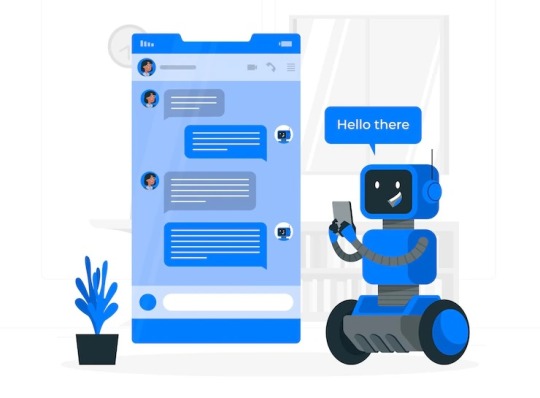
ChatGBT is a chatbot-based AI software that interacts with users in real time. It combines advanced Natural Language Processing (NLP) technology and enhanced algorithms to create natural and engaging conversations. ChatGBT can provide useful customer service functions such as fast issue resolution and recommendation services. ChatGBT also has the ability to automatically generate sophisticated chatbot marketing campaigns with data-driven targeting capabilities. ChatGBT is a powerful tool for modern businesses to increase customer satisfaction and streamline operations, thus making it potentially one of the most disruptive technologies of 2023.
Autonomous Cars

Autonomous cars are driverless vehicles that can navigate roads on their own without any human intervention. While these vehicles are still being tested today, they are expected to become commonplace by the second quarter of 2023. Autonomous cars have the potential to revolutionize transportation, making it quicker, safer, and more efficient than ever before.
Artificial Intelligence (AI)

AI is another topic that will likely dominate tech discussions for years. It is set to make huge and visible advancements specifically in the coming three years. And AI-assisted applications are predicted to become widely available and used in a variety of sectors ranging from media to manufacturing and banking to hospitality.
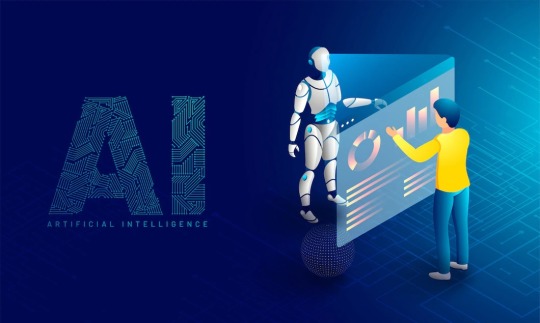
AI involves machines performing tasks that would normally require human intelligence such as decision-making or problem-solving. It has already made its way into many aspects of our lives including healthcare, finance, education, and more. It is only expected to become even more widespread and powerful in 2023.
Tech in the Routine Employee Nurturing Space

AI and ML-based content and image-creating sites have been around for a year or two. But with further advances in both AI and ML technologies, they are quickly becoming an everyday part of the creative process for many people. AI-content creation sites and apps allow users to quickly and easily create AI-generated content tailored specifically to their needs. Additionally, AI-generated images, from landscapes to photographs, can help bring depth and life to projects. This type of AI-generated content is already helping industries such as advertising, marketing, and entertainment by providing them with quick and easy options for creating visually appealing projects. AI and ML is also creating a buzz in the employee engagement space with a few innovative companies like Hubengage integrating the tech into their employee app solutions.
Cybersecurity

As technology becomes more advanced, so does the need for greater cybersecurity measures. Cybersecurity is an essential part of digital operations as hackers become increasingly sophisticated in their methods of attack. Cybersecurity measures should be updated regularly to ensure that all data remains safe and secure from malicious actors online.
Robotics

In recent years, robots have become increasingly commonplace in a variety of industries. Since robotics automates mundane tasks and frees up time for employees, it allows them to focus on more complex projects. Additionally, robotics can also reduce costs associated with human labor.
From factory production lines to medical procedures, robots are quickly becoming an essential part of our lives; and it is poised to make great strides in the coming years as more companies and organizations explore its potential.

The healthcare industry is one area where robotics has seen significant growth in recent years. Robots have allowed doctors and nurses to perform operations with greater precision and accuracy than ever before, resulting in improved patient outcomes.
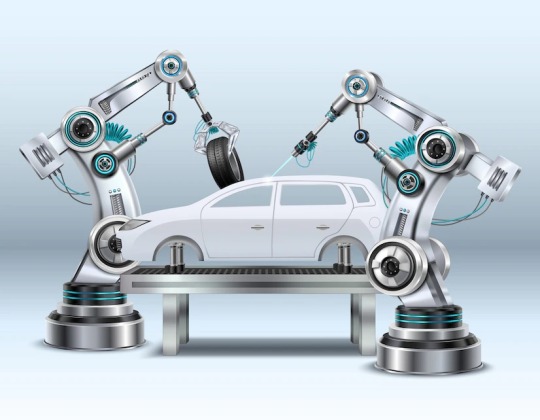
Automakers too are using robotic technology to increase safety and reduce manufacturing costs. Furthermore, advances in artificial intelligence (AI) will allow robots to learn from their mistakes and become even more efficient over time. So, 2023 looks set to be an exciting year for robotics!
Biotech and Genomics
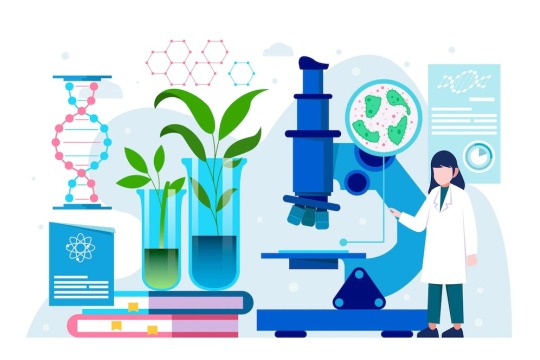
In 2023 biotechnology and genomics are also likely to be the trending topics in tech innovation. This is largely due to advances in technology that enable further development of biotechnology and genomics. Companies have already invested heavily in biotechnology products and genetic editing, so continued expansion and improvement of these technologies are highly probable as funding increases. With growing interest surrounding biotechnology, initiatives such as CRISPR-Cas9 open up a once-impossible avenue for efficient gene editing research. It is expected that biotechnological breakthroughs will benefit the medical field more than ever before, from diagnosis and treatments to cures for a variety of diseases. As such, biotechnology and genomics are poised to shift the future of humanity.
Conclusion:

As we edge towards 2030, technology trends and innovations will no doubt come into play in changing our daily lives in ways both big and small. Additionally, 5G networks are providing us with lightning-fast connections and enabling numerous advances, particularly in tech innovations. 2023 could be a transformative year for both consumers and businesses alike as technology continues its rapid development cycle with no signs of slowing down anytime soon. Autonomous cars, artificial intelligence (AI), and cybersecurity are just a few topics that are sure to dominate tech discussions over the next few years as these technologies continue their evolution toward becoming widely adopted tools across industries worldwide. It’s an exciting time for those interested in technology. How happy your employees are, now technology will tell. So, make sure you stay up to date on these topics if you want your business or organization to remain competitive against its rivals!
#techinnovation#technovation#techtrends#techtrendsin2023#technologyin2023#employeetech#technologyinemployeeexperience
11 notes
·
View notes
Text
What are Employee Resource Groups and How Do They Impact Businesses?

Employee Resource Groups (ERGs) are groups of employees that come together to discuss and celebrate their shared identities, values, or experiences. In other words, ERGs are voluntary committees formed by employees to advocate for diversity, equity, and inclusion goals within the organization. ERGs provide a platform for members to engage with each other on topics of shared interest and develop meaningful relationships with colleagues across departments. ERGs also create opportunities for members to interact with executives or senior leaders in the organization who share their interests or experiences.

At the same time, they offer employers key insights into the wants, needs, and perspectives of their diverse workforce. By joining an ERG, members can feel a sense of belonging at work and gain insight into how their individual characteristics contribute to the success of the company as a whole. The intended audience for ERGs is primarily business owners and HR professionals. Hence, they can be beneficial for both employers and employees alike. In most parts of the developing world, ERGs are also referred to as Worker Unions.
Let’s look closer at what benefits ERGs offer to companies and their employees.
Are ERGS & Worker Unions one and the same?
In a broader sense, they may seem to serve a similar purpose; but ERGs and worker unions are indeed two different things as per law. Unions are always legal entities, but ERGs can be casual groups.
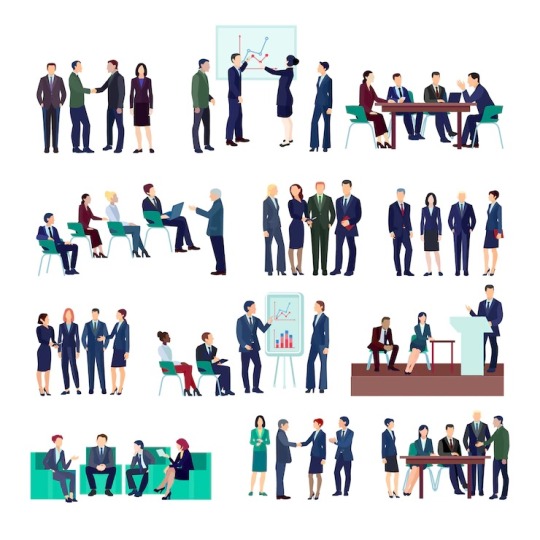
Employee Unions are organizations that advocate for the rights of workers in the workplace. They are made up of employees who band together in order to get better wages and working conditions. Employee unions are an important part of the modern workplace. And they are governed by strict labor laws and other regulations. Forming a worker’s union requires 30% of the company’s total workforce to sign up. Employees must then file for recognition from the National Labor Relations Board (NLRB). The NLRB will then review the petition and hold hearings on whether the proposed union should be recognized. If it is determined that most of the employees support the cause, then a union will be formed. After that, they will be allowed to proceed with collective bargaining negotiations with their employer.

On the other hand, Employee Resource Groups or ERGs are organized communities of employees who come together around shared experiences or backgrounds such as race, sexual orientation, age, gender identity/expression, religion, physical ability/disability status, mental health status, nationality/ethnicity/cultural background, veteran status, or any combination thereof. ERGs foster a sense of belonging by providing peer-support networks that help employees feel connected to each other and their company.
The Pros of Employee Resource Groups
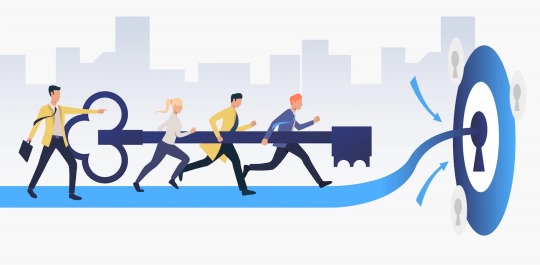
Employee Resource Groups have a wide range of benefits for both companies and employees alike. For starters, ERGs can help create a more diverse work environment by providing a platform where people from different backgrounds can connect and form meaningful relationships with one another. This not only allows individuals to learn from each other’s experiences but also gives them access to valuable networks that can help them advance their careers. In addition, ERGs can foster a sense of belonging among members while also promoting greater employee engagement and satisfaction overall.

Employee Resource Groups (ERGs) are an increasingly popular way for companies to create a sense of community, foster diversity and inclusion, and empower employees with free speech. ERGs also open up new opportunities for employees to gain leadership experience by organizing events such as fundraisers or meetings with executives. By taking on these roles within the group, individuals can develop crucial skills such as communication, problem-solving, and decision-making that will be beneficial in any career path they choose to pursue down the line. Furthermore, ERG members often have access to exclusive training courses or mentorship programs that give them a leg up on other applicants when it comes time for promotions or job changes.
The Cons of Employee Resource Groups

While there are many advantages associated with forming ERGs in the workplace, there are some potential drawbacks that must be taken into consideration as well. One potential issue is the risk of creating an “us vs them” mentality between members of different groups within the organization. To avoid this scenario, it’s important for employers to ensure that all ERG activities are inclusive rather than exclusive in nature—meaning everyone should feel welcome regardless of which group they belong to. Additionally, if not managed properly, ERGs can lead to conflicts between members due to differences in opinions or beliefs which then could spill over into other areas of the organization if not addressed promptly by management teams.
Are Employee Resource Groups Resourceful from an Employee Perspective?

Absolutely! ERGs provide employees with an opportunity to connect with like-minded individuals who share similar backgrounds or experiences. This can be especially beneficial for people who come from diverse backgrounds or have different perspectives than those typically represented in the workplace. Having a safe space where employees can openly discuss issues related to their group identity can help foster understanding between co-workers and create more inclusive workplaces where everyone feels seen and heard. Additionally, many organizations offer mentoring programs through their ERGs which give members access to career advice from senior leaders in the company—furthering opportunities for personal growth and development within the organization.
How Can Employee Resource Groups Help Create Sustainable Workforces?

ERGs play an important role in helping businesses create sustainable workforces by encouraging diversity of thought while also promoting cultural understanding between co-workers. A supportive network of peers is essential when it comes to creating an equitable work environment that is welcoming to all types of people—regardless of race, gender identity, sexual orientation, disability status, or other factors that makeup someone’s individual identity. By fostering these connections at work, companies can create strong teams that produce better results—helping them stay ahead of their competition while also providing a better experience for their customers.
How Can Companies Implement ERGs?

Implementing ERGs in the workplace requires the support of senior leadership along with thoughtful consideration of your company culture. Companies need to ensure that resources are available to support an active group while also being mindful of legal issues such as anti-discrimination laws. It’s important to provide guidance on topics like membership requirements and scheduling meetings so that expectations stay aligned across all groups. Additionally, it’s important for companies to make sure their ERG is open to all employees regardless of race or gender. This helps ensure that everyone has access to the same opportunities regardless of their background or experience level.
Are There Any Laws or Regulations Regarding ERGs?
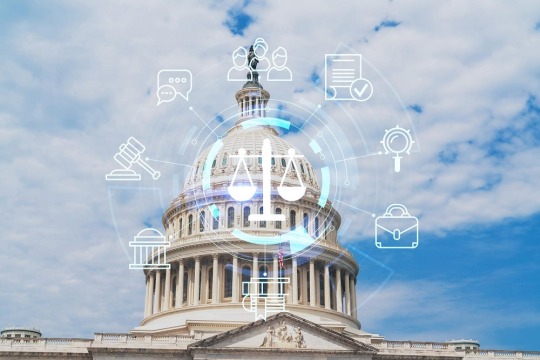
The US Equal Employment Opportunity Commission requires employers to not discriminate against employees based on any protected classes like race or gender identity/expression. Additionally, many countries have laws prohibiting discrimination in the workplace based on similar criteria making it imperative for companies operating globally to comply with local laws as well as international ones when implementing employee resource groups within their organization.

Conclusion:
Employee Resource Groups offer businesses many benefits such as increased diversity in the workplace; improved engagement; greater employee satisfaction; leadership development opportunities; and access to exclusive training courses or mentoring programs for its members.
ERGs offer a great way for companies to create a sense of community among their workforce by fostering diversity and inclusion in the workplace while empowering employees with free speech. When implemented properly—with support from senior leadership and consideration for legal issues—ERGs can help build stronger teams and promote better working relationships between colleagues.
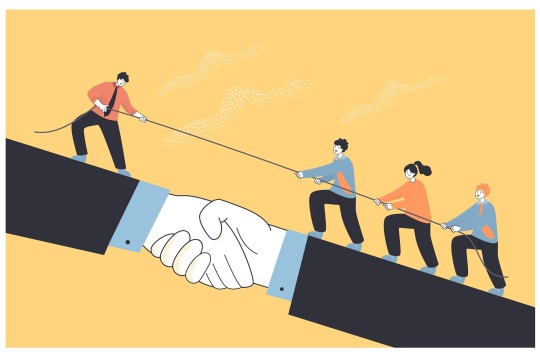
If you're looking for ways to better engage your team while creating a more inclusive workplace environment, then considering implementing an ERG could be just what you need!
However, it is essential for businesses to take care when setting up these groups so that all members feel included and respected while avoiding any potential conflicts between members due to differences in opinion or beliefs which could spill over into other areas of their operations if not managed properly by their teams.

With proper planning and execution of these groups within organizations worldwide—from the US all the way around the world—companies can leverage these resources effectively towards creating sustainable workforces while empowering their employees with free speech through formal and informal leadership opportunities available through ERG formation laws regulations worldwide.

If you are looking for a quick way to form smaller groups within your organization to discuss matters of common interest and concern, you can start with an employee app like HubEngage. Check it out and give your career the substance it deserves.
#employeerights#employeewelfare#employeeunion#employeeresourcegroup#employeemanagement#modernreality#needofthehour#employeeapp#employeeengagement#employeecommunication#employeerecognition
0 notes
Text
Baby Boomers Vs Gen X Vs Gen Y Vs Gen Z. How Baby Boomers continue to rock in 2022?
Each generation is different in its own unique way. From values to lifestyles to beliefs, each group of people born within a certain period of time has its own distinct characteristics that differentiate it from the other generations. Let’s break down the differences between Baby Boomers, Generation X, Millennials, Generation Z, and Generation Alpha.
Baby Boomers (1946-1964)

Baby Boomers are associated with traditional values such as hard work, respect for authority, and dedication to their jobs. They grew up in a time when there was more emphasis on personal relationships with colleagues at work than on technology. Baby Boomers tend to be more focused on job security and are less likely to take risks in their careers.
Generation X (1965-1980)

Gen X is known for being independent and self-reliant. They grew up before the digital age and witnessed huge changes in technology during their formative years. Gen Xers tend to be more tech-savvy than their predecessors and have embraced new technologies such as social media for both personal and professional use. They are also highly entrepreneurial and value creativity in the workplace.
Millennials (1981-1996) or Generation Y

Gen Y grew up surrounded by technology yet still value face-to-face interaction over virtual communication. They are often described as team players who prefer collaboration over competition and seek meaningful work that offers them a sense of purpose beyond just monetary gain. Millennials value flexibility in their schedules, including working remotely or flexible hours when needed.
Generation Z (1997-2012)

Gen Z is sometimes referred to as the “digital natives” thanks to their exposure to advanced technology at an early age—from smartphones to tablets—which they have used extensively throughout their lives. They prefer visual learning tools like YouTube videos over traditional methods like textbooks or lectures in school and tend to value practical knowledge over theoretical knowledge they can use in the real world right away. They are also highly resourceful when it comes to finding information online or using apps for everyday tasks such as ordering food or booking travel tickets online without going through a middleman agent.
Generation Alpha (2013 - present day)

Gen a is sometimes referred to as the “first digital natives” since they were born into a world already dominated by technology and social media platforms such as Snapchat, Instagram, and TikTok which they use every day for leisure activities but also for educational purposes such as researching topics related to school projects or keeping themselves updated about current events around the world that interest them specifically instead of having information spoon fed through television news channels controlled by adults with agendas of their own. Alphas tend towards empathy rather than competition when interacting with peers which makes them more capable of working together in teams than previous generations ever were before them. Alphas also have access to larger amounts of data due to advances made by cloud computing technologies which give them greater insight into problems they may encounter while trying out innovative solutions.
Each generation has its own unique set of traits that make it stand out from others; however, these traits should not be taken as definitive rules but rather as general guidelines that help us better understand how different generations view things differently from one another so we can find common ground among ourselves despite our generational differences. By understanding how each generation perceives life differently, we can bridge any gaps between us so we can all work together toward a better future. It's only then that true progress can be made!
Understanding Baby Boomers in the Workplace

Born between 1946 to 1964, baby boomers are the generation that helped shape our society. As members of the workforce, they have a unique perspective on how to pursue success, and their contributions should not be overlooked. In this blog post, we’ll take an in-depth look at this generation and explore their outlook on life and work, what challenges they face, why they are loyal to their employers, and how they can motivate younger generations.
Outlook on Life & Work
Baby Boomers are generally ambitious and hardworking people who believe in setting goals and working diligently to reach them. They tend to be more traditional than other generations when it comes to their approach to life and works; many prefer face-to-face communication over digital methods such as texting or emails. Furthermore, baby boomers often strive for financial stability before taking risks or pursuing more creative endeavors.
Challenges Faced at Work

Baby boomers may find themselves struggling with technology due to their lack of experience with newer technologies such as computers or social media platforms. They may also struggle with adapting to new ways of doing things as well as keeping up with the changing trends of the workplace. Additionally, ageism can also be an issue for baby boomers in the workplace; many employers may not see older workers as being able to keep up with the pace of younger employees.
Why Are Baby Boomers Loyal?

Baby Boomers are some of the most loyal employees out there – once they find a job that fits their needs, they will stay put until they retire or until something better comes along. This is due in part to their strong sense of commitment and dedication; once they’ve found a job that suits them, baby boomers will stick with it no matter what challenges arise along the way. Additionally, loyalty is something that this generation values highly; by staying loyal to one employer throughout their career, baby boomers demonstrate their commitment both personally and professionally.
How Can Baby Boomers Motivate Younger Generations?

Baby boomers have a wealth of knowledge and experience that can prove invaluable when it comes to motivating younger generations. By sharing stories from their past successes (and failures), baby boomers can help instill confidence in younger generations so that these individuals can reach greater heights than ever before. Additionally, by providing mentorship opportunities for young employees, baby boomers can help foster growth within an organization while inspiring those around them.
Some of the Great Baby Boomers making it count in 2022
The baby boomer generation, born between 1946 and 1964, has a unique place in American history. This group of people has seen tremendous changes throughout their lives, from the advent of the internet to the birth of modern technology. In 2022, the baby boomers will be 78 years old or older, and some are still making significant contributions to society. Let's take a look at some of these amazing individuals and what they are doing in their later years.
1. John Kerry

Former Secretary of State John Kerry is now 78 years old but remains an active voice in politics. He currently serves as Chairman of the Board for World War Zero, an organization dedicated to fighting climate change. He also continues to work as a speaker and consultant on international relations and diplomacy issues. His long career in public service is impressive and inspiring for all generations. Kerry founded the John Winant Society at St. Paul's to debate the issues of the day; the Society still exists there. In 1960, while at St. Paul's, he played bass in a minor rock band called “The Electras” with six of his classmates. (Source: Wikipedia)
2. Gloria Steinem

Gloria Steinem is an American feminist, journalist, and social activist who was a leading figure in the women's rights movement in the 1960s and 1970s. She co-founded the feminist magazine Ms. in 1972 and has been a prominent voice in the fight for gender equality ever since. Steinem gave much of her time to political organizations and became an articulate advocate for the women's liberation movement. She participated in the founding of the Coalition of Labor Union Women, Voters for Choice, Women Against Pornography, and the Women's Media Center. (Source: Encyclopedia Britannica)
3. Warren Buffett

Warren Buffett is an American investor, business tycoon, and philanthropist. He is the chairman and CEO of Berkshire Hathaway, one of the largest companies in the world. Buffett is also one of the richest people in the world, with a net worth of over $90 billion. Buffett had an uncanny interest in making money, and it led him to a long life of success and money-making. Buffett has over 65 years of experience in investing, and with it, he has become one of the most powerful leaders in the world.
Much of Buffet's lifetime giving—amounting to some $2 billion to $3 billion worth of stock annually in recent years—has gone to the Gates' foundation, which has put it to work on poverty and healthcare initiatives in developing countries and education in the U.S. (Source: Forbes.com)
Buffett's investment wisdom and quotes on how to be successful involve starting early, never losing money, and not letting your emotions get in the way. He is a big believer that people need to invest in themselves and think long-term to achieve their goals. (Source: fool.com)
4. Oprah Winfrey

Oprah Winfrey is an American media proprietor, talk show host, actress, producer, and philanthropist. She is best known for her talk show The Oprah Winfrey Show, which was the highest-rated daytime talk show in TV history. It ran for 25 years and was seen by millions of people around the world. Oprah has also been active in various philanthropic endeavors, most notably her work with child abuse prevention and education initiatives. In addition to her television success, Winfrey has also established herself as a successful businesswoman, with interests in film, television production, and magazine publishing. In addition to her business successes, Winfrey is also a noted philanthropist, having donated billions of dollars to various charitable causes.
5. Jeff Bezos

Jeff Bezos is an American technology entrepreneur and investor. He is the founder, chairman, and CEO of Amazon.com, one of the largest online retailers in the world. Bezos is also one of the richest people in the world, with a net worth of over $80 billion. Forbes estimates that Bezos has donated more than $2.4 billion to charity in his lifetime. He committed a total of $10 billion to his own climate non-profit, the Bezos Earth Fund, in 2020. As of November 2021, the fund had granted nearly $1 billion of that total. (Source: CNBC, 16 Nov 2022)
6. Ruth Bader Ginsburg

Ruth Bader Ginsburg is an Associate Justice of the Supreme Court of the United States. She was appointed to the court by President Bill Clinton in 1993 and has served since then. Justice Ginsburg is considered to be a liberal voice on the court and has authored several important opinions on gender equality, including United States v. Virginia (1996), which struck down the Virginia Military Institute's male-only admissions policy. She took up the mantle of litigating gender inequality cases with measured, conservative baby steps, tackling one law at a time because she thought the radical change would be too much too soon. But still, Ginsburg was growing into her role as one of the 30 women pioneers who changed the world. (Source: Reader’s Digest, 11 Nov 2022)
7. Bill Gates

Bill Gates, 66, is an American business magnate, software developer, and philanthropist. He is the co-founder of Microsoft Corporation, one of the world's largest software companies. Gates is also one of the richest people in the world, with a net worth of over $100 billion - but no one can say that he isn’t trying to give back. The Microsoft co-founder has vowed to give away more than half of his fortune, and his charitable organization, The Bill and Melinda Gates Foundation, has given away $41.3 billion to various international and domestic causes to date. In the last five years, the Bill and Melinda Gates Foundation is believed to have invested $1.7 billion in U.S. public education.
Bill Gates’ main impact on society was making computers personal, available, and easy to use for everyone. Before that computers were mega-complex machines that only trained people could handle. (Source: Encyclopedia Britannica, 24 Oct 2022). He continues to serve as co-chairman for the Bill & Melinda Gates Foundation, which works to find solutions for global poverty and disease prevention. His philanthropic efforts have made him one of the most influential people in history.
8. Larry Ellison

Larry Ellison is an American businessman and philanthropist. He is the co-founder and executive chairman of Oracle Corporation, one of the largest software companies in the world. Under his leadership, Oracle grew from a start-up with three programmers into the largest supplier of database software and the second-largest supplier of business applications in the world. Ellison has a net worth of over $60 billion. (Source: Investopedia and Forbes.com)
9. Ellen DeGeneres

Ellen DeGeneres is an American comedian, actress, writer, producer, and television host. She is best known for her popular daytime talk show The Ellen DeGeneres Show, which has won numerous awards over its 15-year run. Ellen has also been active in various charitable causes, including animal rights and LGBT rights. She supports over 50 charities and numerous humanitarian aid organizations and has won many awards for her charitable efforts. With Ben Affleck, DeGeneres launched the "Small Change Campaign" to benefit Feeding America. Ellen supports the Hurricane Katrina Relief Fund through the American Red Cross. (Source: Look to the Stars, 2022)
10. Sonia Sotomayor

Sonia Sotomayor is an Associate Justice of the Supreme Court of the United States, having been appointed to the court by President Barack Obama in 2009. She is considered to be a liberal voice on the court and has authored several important opinions on issues such as affirmative action and same-sex marriage. During her Supreme Court tenure, Sotomayor has been identified with concern for the rights of defendants and criminal justice reform and is known for her impassioned dissents on issues of race, gender, and ethnic identity, including Schuette v. BAMN, Utah v. Strieff, and Trump v. Hawaii. (Source: Wikipedia)
11. Bonnie Raitt

Bonnie Raitt is an iconic singer-songwriter who has been performing since 1971 when she released her first album at age 19. Now 74 years old, she continues to tour around the world while maintaining her commitment to environmental causes like clean energy initiatives and sustainable agriculture projects. Her music has crossed generations and influenced countless other musicians over the decades. Raitt is one of the world's most talented female singers/songwriters/guitarists and has released seventeen studio albums and won a total of ten “Grammy Awards.” In the year 2000, she was inducted into the “Rock and Roll Hall of Fame”.
Bonnie is as known for her lifelong commitment to social activism as she is for her music. She has long been involved with the environmental movement, doing concerts around oil, nuclear power, mining, water, and forest protection since the mid-’70s. She was a founding member of MUSE (Musicians United for Safe Energy) which produced the historic concerts, album, and movie NO NUKES, and continues to work on the nuke issue as well as fighting to preserve our Ancient Forests. She also continues to work on issues of social justice and human rights, as well as royalty reform and music education. (Source: Various News articles)
Conclusion

The baby boomers are living proof that growing older doesn't mean slowing down or giving up on life’s passions—it means adapting with grace while continuing to make meaningful contributions to society well into our golden years. From politics to business to music, this amazing generation continues to inspire us all with their ambition and persistence despite any obstacles they may face along the way!
Baby Boomers play an important role within today’s workforce – from providing insight into traditional values and approaches towards work to offering mentorship opportunities for younger generations – this generation has been instrumental in shaping our modern world. With a unique outlook on life and work coupled with unwavering loyalty and commitment, baby Boomers provide tremendous value in any workplace environment. Whether you’re looking for wisdom or inspiration, baby Boomers provide a valuable resource that should not be overlooked.
#most influential people#celebs of substance#powerful people#leading from the front#inspriing people#rocking baby boomers#free inspiration
0 notes
Text
Generations X, Y, and Z – Challenges and Solutions
As the world evolves and changes, so does the population. We are currently in a period of time where there are four distinct generations in the workforce.
These generations are:
· Generation X (born 1965-1980)
· Generation Y (born 1981-1995)
· Generation Z (born 1996-2010)
So how do we decipher the differences between them? What drives them to perform better at work? And how should one behave with them? Let’s dive into a deeper look into each generation to try and answer these questions.

Understanding the Challenges of Generations X, Y, and Z a little deeper
As technological advances continue to redefine our way of life, generations X, Y, and Z have become increasingly distinct in their outlooks toward life. This can be seen in their choice of career paths, loyalty quotient, and the common bones of contention between them. Let’s take a look at how each generation differs and what challenges they face.
Generation X
Generation X (born 1965-1979): Generation X is known as the first group to grow up with technology such as video games, cell phones, and personal computers that have become commonplace today. They are driven by career advancement and tend to switch jobs frequently compared to previous generations. They also lack loyalty when it comes to employers and prefer working for themselves or in an entrepreneurial capacity due to their independent nature. Common career choices for this generation include business leaders, entrepreneurs, IT professionals, software engineers, and medical professionals.

Generation X is also referred to as “the forgotten generation” as they tend to be overshadowed by other generations. They grew up with technology such as computers, but not quite as advanced as what younger generations have grown up with. They are highly independent, self-reliant, and multitaskers who value work/life balance. They appreciate honesty, transparency, initiative, hard work, and autonomy at work, over rigid structures, or rules. To motivate them you should offer opportunities for advancement, freedom to make decisions on their own terms and provide recognition when they do well.
Generation Y
Generation Y (born 1980-1994): Also known as Millennials, Generation Y is the first generation to grow up with the internet which has revolutionized our lives today. They are tech-savvy yet slightly skeptical about technology due to its overwhelming presence in their lives since childhood. Common career choices for this generation include social media managers, digital marketers, content creators/curators, web developers/designers, and bloggers.

Generation Y is more commonly known as “Millennials” and this generation is much more tech-savvy than other generations because they grew up surrounded by modern technology like smartphones and tablets. They are driven by collaboration and feedback from colleagues or supervisors rather than a top-down approach that Generation X may prefer. To motivate Millennials, you should provide opportunities to collaborate with colleagues on projects or tasks, giving them a sense of ownership over their work. It is also important to provide frequent feedback about their performance since Millennials often expect it for career growth purposes.
Generation Z
Generation Z (born 1995-2009): Also known as ‘Zoomers’ or ‘Digital Natives’ this is the first generation born into a world where technology is ubiquitous across all aspects of life; from communication methods like texting or video calls instead of phone calls or emails; virtual classrooms instead of physical classrooms; streaming services instead of physical TV sets etc. Their use of technology has made them highly efficient multitaskers who prefer short bursts of information over long drawn-out conversations/meetings etc., making them ideal for careers involving tech support services such as customer service representatives or help desk technicians, etc., data entry clerks/typists, etc., virtual assistants or remote workers, etc., software engineers/programmers, etc., graphic designers and game testers/developers, etc.
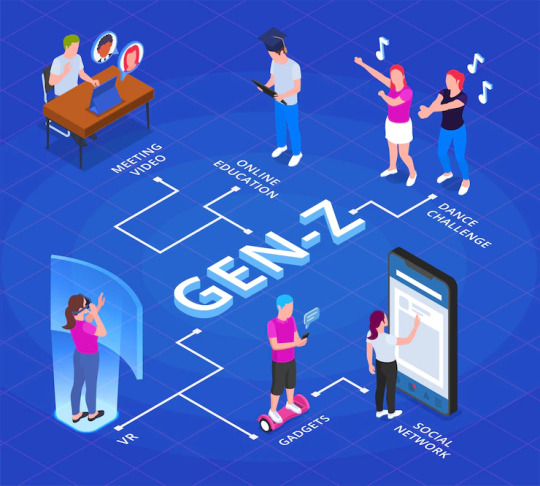
Generation Z is also known as “Digital Natives” because of their reliance on digital devices like smartphones or laptops since birth - literally! This generation values flexibility when it comes to their roles or jobs; they want something that feels purposeful but still offers the opportunity for personal development within it. Since Gen Z has grown up in an era of social media overload, providing instant feedback about performance through platforms like Slack or emails can be very effective for motivating this generation since it allows them to receive real-time updates about their progress instead of waiting until the annual reviews come around.
Is there one tool that binds every generation and motivates them to perform better at work?

Fortunately, there is. This is one of the most highly recommended software of 2022 by tech reviewer Software World. It’s a unified employee app that attracts users across generations and helps them express themselves freely. With an average employee participation rate of 95% and a user interaction count of over 5 million in just 3 years, HubEngage is the go-to platform for all things related to employee motivation and employee nurturing. The company has spread its footprint across America and is rapidly growing across the UK, Canada, the Gulf, and the APAC regions. Apart from all the USPs of the employee intranet, HubEngage truly offers rational pricing options for its patrons. As if that wasn’t enough, they also give every prospect a 3-month no-questions-asked demo app experience. Prospects can use the app for 3 months before deciding if they would like to go for the full package or not. Now, how many companies offer something like that? That in itself is proof of what you get on the unified employee platform.
Conclusion
Generations X, Y & Z come from completely different backgrounds, but each faces unique challenges when it comes to finding meaningful work that fits their skill sets while also providing financial stability. However, with proper guidance from mentors/elders who understand these generations better than anyone else can also provide unique solutions that will enable these younger generations to make informed decisions about their future careers based on their individual skillset preferences thus allowing them to maximize their potential while achieving success and fulfillment in whatever endeavors they choose to pursue!
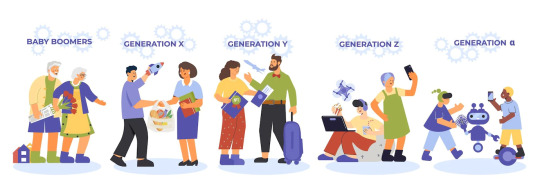
Each generation has different preferences when it comes to motivation but understanding those preferences can help employers create an effective workplace where everyone feels valued – no matter how old they are! Taking the time to understand each generation's perspective allows you to create an inclusive environment where everyone can thrive – regardless of age group! Creating a space like HubEngage, that caters specifically to every single generation’s unique needs while still being inclusive overall will ensure employers get the best results out of all employees present in the workplace, regardless of their age!
#generation gap#generational challenges#corporate challenges#simple solutions to work issues#hr tips#workforce management strategies#teambuilding#teammotivation#teamchallenges#teamspirit#genx vs geny vs genz
0 notes
Text
What are the Best Social Media Monitoring Tools - for both, regular, and internal employees specific?
Social media is an integral part of modern life. It has become a powerful platform for businesses and individuals to easily reach their target audiences, build relationships, and promote products or services. Whether it is for personal use or for companies to help their staff socialize, the options are plenty. And with so many social media platforms to choose from, it can be difficult to know where to start.
To help you make the right choice, here are eight of the best social media monitoring tools for international use: Hootsuite, Sprout Social, Brandwatch, Meltwater, Awario, Mention, Social Bakers, and Buffer Analyze. And if you are looking for a Social Media Monitoring tool for Internal communications, engagement and recognition, there is no app better than HubEngage.
Each of these tools has unique features and benefits, so it's important to research which will best meet your needs. For example, Hootsuite is very user-friendly and offers a wide range of features, while Meltwater is more expensive but provides more comprehensive data analysis.
So ultimately the choice of tool depends on your specific requirements and budget. But all of these tools are effective in helping businesses to track and monitor their social media presence in different global markets.

Hootsuite is one of the most popular social media management platforms out there. It enables businesses to monitor their accounts across multiple platforms—including Twitter, Facebook, Instagram, and LinkedIn—and manage them all in one place. Hootsuite also offers comprehensive analytics that allows businesses to measure performance and track ROI across all their channels in real time.

Mention offers real-time brand monitoring and analytics for over 25 countries in 20 languages. It allows users to track, analyze, and respond to mentions anywhere on the web—from Twitter and Facebook to news sites, blogs, forums, images, and more. Mention also provides advanced insights into user sentiment towards brands, allowing businesses to better understand their customers’ needs and preferences.

Sprout Social is a comprehensive social media management platform that helps businesses increase engagement with their target audience through social listening and response tools. With Sprout Social's unique insights feature, users can get real-time analysis of their content performance across multiple networks as well as data-driven recommendations on how they can improve engagement with followers.

Brandwatch is a social media monitoring tool that allows businesses to track and analyze conversations on social media platforms such as Twitter, Facebook, and Instagram. It also allows users to gather insights about their brands, competitors, and industries. Brandwatch offers a wide range of features, including the ability to create custom reports, track competitor activity, monitor hashtags and keywords, and more. It's an extremely powerful tool for businesses who want to stay ahead of the curve on social media.

Meltwater is a social media monitoring tool that allows businesses to track, analyze, and respond to online conversations about their brand. It provides insights into what people are saying online, how they are talking about your brand, and who is saying it. Meltwater also helps you measure the effectiveness of your social media campaigns and find new leads from online conversations. It is also an effective tool for competitor research. Using the unlimited keyword search, organizations can track competitors, products, individual campaigns, and hashtags. Benchmarking their mentions against your own allows you an overview of the market and the share that your organization occupies.

Awario is a social media monitoring tool that can help you keep track of what people are saying about your brand online. It can also help you identify potential threats and opportunities early on, so you can take advantage of them before they become a problem. It monitors your keywords on Twitter, YouTube, Reddit, news, blogs, forums, and the Web. New sources for social listening are regularly added. Unlike most social media monitoring tools, Awario provides you with both real-time and historical data.

Socialbakers, which is now emplifi, is a powerful tool used by brands around the world for social media marketing campaigns and analytics reporting. The platform offers detailed metrics such as post reach and engagement rate; competitor comparison reports; AI-powered recommendations; automated scheduling; influencer marketing tools; lead generation features; and more.

Buffer Analyze is another great option for managing your presence on social media platforms like Instagram, Twitter, LinkedIn, YouTube & Pinterest at scale globally. It gives you detailed insights into your content performance combined with powerful monitoring capabilities so you can quickly identify trends in conversations about your brand or industry topics related to your business goals & objectives worldwide.

HubEngage is a unified employee communications platform that is preferred by Fortune companies globally to fulfill their internal communications, staff engagement, and workforce recognition needs. HubEngage is also an intra-company social media app where staff, vendors, partners, and associates can network with each other. The company can control who accesses what on the platform, and they can also target content individually or in groups. The average rate of employee participation on the app, worldwide is 95%, which is the highest recorded percentage across platforms ever. Once installed, employees simply latch onto it never wanting to let go. All analytics are real-time and can be accessed from anywhere on mobile devices, web browsers, and on desktops. And because it is all cloud-based, there is no need to worry about remembering credentials or saving posts. All you need is an internet connection. In the last 3 years alone, HubEngage has experienced over 5 million interactions on its platform. It is a top rated employee app of 2022. For a free demo, click here.

Conclusion:
With so many options available today, both for regular as well as corporate social media, it can be hard to choose the right one for your business needs when it comes to choosing a social media monitoring tool – but hopefully this list gives you a good starting point! Whether you’re looking for insights on user sentiment or detailed analytics reports - the above-mentioned tools have something that will help build your online presence internationally - no matter what type of business you run or which part of the world you are in.
#social media platform#socialmediapp#socialmediasoftware#socialmediasolution#socialmediatool#corporatenetworking#internalsocialforum#intraofficesocialmedia#employeesocialmedia
0 notes
Text
Why employees should be treated like human beings and not machines?

As an employer, it is easy to think of your employees as machines. After all, they are there to do a job and produce results. But treating employees like machines can have consequences far beyond decreased productivity. It can lead to lower morale, more turnover, and even lawsuits. Instead of treating your employees like robots, you should strive to treat them with respect and understanding, just as you would any human being. Here’s why.

Skill Development and Satisfaction
Treating your employees like human beings is key to developing their skillset and driving satisfaction. When workers feel respected and appreciated by their employer, they are better able to focus on their work and develop the skills necessary for success in the long-term. This means they can produce results that help grow your business while also gaining valuable experience at the same time. Moreover, when employers treat their employees like human beings instead of robots, it shows that they value their contributions to the team—and this often leads to increased job satisfaction overall and reduced attrition.

Employee Feedback and Decision Making
It’s also important to give employees a say in decision-making processes—not just because it’s fair but because it helps drive better results in the long run. Employees who are given the opportunity to provide feedback are more invested in the decisions being made since these decisions affect them directly. In addition, employee feedback can help identify problems that managers may not be aware of or may not have considered which can lead to better problem-solving down the line.

Insurance and Appraisal Benefits
Finally, treating employees like human beings also comes with tangible benefits beyond improved morale and job satisfaction—such as health insurance coverage or performance appraisals. When employers take care of their staff with these kinds of benefits, it shows that they value their contributions enough to invest in them both professionally and personally, which builds trust between employees and employers alike. This trust can go a long way toward reducing turnover rates since employees will be less likely to leave if they know they are valued by their employer.
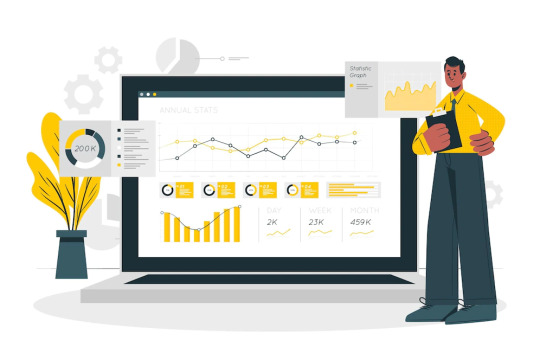
Conclusion:
All in all, treating your employees with respect is essential for creating an environment where everyone is productive and satisfied with their jobs. By recognizing each employee as an individual instead of just another cog in the machine you will create an atmosphere of mutual respect where everyone feels valued—which ultimately leads to better outcomes for everyone involved!
Do it right with the smartest employee recognition platform in town.

Some useful links on the subject:
10 Shocking Workplace Stats You Need To Know
93 Most Compelling Workplace Statistics
4 shocking statistics that every manager needs to know
#how to treat your employees#employee betterment#employee wellness#employee nurturing#employee care#employer responsibilities#employer duties toward employees#employee-employer dynamics
0 notes
Text
HubEngage, the best employee recognition platform in the US, is offering a no-strings-attached Demo App experience without any purchase commitment!
Are you looking to improve corporate recognition in your organization? HubEngage, the leader in employee engagement, is offering a no-strings-attached 3-month hands-on software experience. You’ll be able to experience their limited feature demo app for up to 3 months so that you can decide if they are the right platform for you before subscribing to the complete package.
From Fortune 500 to small businesses, employee recognition is a key factor in boosting morale and productivity. HubEngage is one of the top employee recognition software platforms available today, offering features that can be tailored to meet the needs of companies of all sizes. Let’s take a look at how the staff recognition app can help you reward and recognize your employees.

How Does it Work?
The process is super simple. All you have to do is visit the HubEngage website and book a free demo. After the detailed presentation, your demo app experience will be activated in less than 48 hours. The software includes three types of recognition: top-down (management to employee), bottom-up (employee to management), and peer-to-peer (P2P). This makes sure that everyone in your organization feels appreciated and rewarded for their hard work.

Why use Employee Recognition Software?
The HubEngage platform is being used by some of the biggest companies in the US and Canada. who is seeing great success with improved employee engagement and culture? The platform uses an analytics dashboard that gives visibility into how employees are performing over time. Additionally, they offer personalized rewards programs where each employee can redeem rewards points for items such as gift cards or travel certificates.
Employee recognition is an important part of keeping workers motivated and engaged. Studies have shown that when employees feel appreciated for their hard work, they are more likely to stay with a company for longer periods of time. In addition, recognizing employees can create a better working environment, leading to improved performance and higher customer satisfaction.

Why is HubEngage a great staff recognition software?
HubEngage is designed to make employee recognition easy, efficient, and fun. With this platform, you can quickly create custom office recognition programs that are tailored to your specific needs from time to time. It also provides companies with a powerful rewards program gamification that has unparalleled USPs such as the ability to review staff performances and plan out work appraisals seamlessly. You can also easily motivate your staff with custom employee rewards and inspire them with brandable recognition software — all within one platform!

Benefits of Using HubEngage
The best part about using HubEngage is that it makes employee recognition effortless and straightforward. You don’t need any technical knowledge or coding skills — just sign up and get started right away! This platform also allows you to customize your interactions in 12 international languages and tailor your rewards program according to your budget or goals so that you can find the perfect solution for your company’s unique needs. Finally, its user-friendly interface makes it easy to set up and manage programs in no time at all. If you’re looking for a way to boost employee performance, you should seriously consider using a credible employee recognition platform such as HubEngage. It is a great internal recognition tool that is also one of the most preferred recognition software apps in America.
HubEngage has also helped organizations see increased employee productivity, satisfaction, and retention. Extended Stay Hotels, a major hotel chain that deployed HubEngage across 700 locations in the US saw their Glassdoor ratings jump from 2.5 to 3.9 in just 6 months. “Regular users of the app have better cultural awareness and help drive-up hotel profitability,” says Lizz Chambers, VP - Associate Engagement, Newport Hospitality Group Inc.

What Makes HubEngage Stand Out?
What really sets HubEngage apart from other platforms is its commitment to customer service and satisfaction. They have dedicated customer success representatives who provide 24/7 support and guidance during onboarding and setup so that clients can get up and running quickly without any hiccups along the way. They also offer custom solutions tailored to each client's unique needs so that companies can maximize their investments in this platform. Plus, with their no strings attached 3-month hands-on software experience, clients have nothing to lose when trying out this powerful platform!

Conclusion:
Employee recognition programs are essential for creating a positive working environment where employees feel valued and appreciated for their hard work. With its intuitive design, detailed features, and customizable options, companies of all sizes can find the perfect employee recognition solution in HubEngage. Whether you want to reward top performers or create management-level employee recognition programs, this platform has the tools necessary for success!
Try out www.HubEngage.com today – you won’t regret it!
#employeerecognition#bestrecognitionplatform#employeerecognitionplatform#staffrecognitionsoftware#internalrecognitionplatform#modernintranet#officerewardsprogram#rewardsandrecognition#employeemotivation
0 notes
Text
DEI in the Global Workplace
AA was new to America. She was one of the few girls in her war-torn country who had had the good fortune to be educated and well-read in emerging technologies. This is the first time she has stepped out of her country. As she walked into her new job as the newest recruit, she was worried about the fact that she would be judged for her ethnic background which was evident from the way she looked. As she got introduced to her peers, she was struck by the diversity of the office. People of all races, ethnicity and religions sat next to each other as if one big family. The air was thick with the smell of coffee and freshly baked cookies.

As she traversed through her first day at work, AA couldn't help but feel excited about the possibilities that lay ahead. She had always believed in equality and inclusion but hadn’t really witnessed it in the past. She was thrilled to be able to work in an environment where everyone felt welcome without strings attached.
Over the next few weeks, AA got to know her colleagues better. She learned about their families, their hobbies, and their dreams for the future. And she quickly realized that they were all equally talented and capable professionals.
Despite the differences in their backgrounds, everyone in the office worked together harmoniously. They collaborated on projects, shared ideas freely, and helped each other out when needed. It was truly a model workplace for DEI. She felt confidence, happiness, and a freedom like never before.

“What is normally taken for granted in some parts of the world, is truly a treasured experience in another.”
Diversity, Equity, and Inclusion, or DEI is a hot topic in the workplace today. Companies of all sizes are trying to create workplaces that are more diverse, equitable, and inclusive.

So, what exactly Is DEI and why is it such a big deal?
DEI stands for Diversity, Equity, and Inclusion. It can be defined as a set of policies and practices that aim to create an environment of equity and inclusion for all employees regardless of race, nationality, appearance, gender identity, sexual orientation, religion, or any other protected class. These policies are designed to foster a sense of belonging among employees by recognizing their unique backgrounds and experiences. By creating an environment where all employees feel valued for who they are, companies can recruit more effectively and retain talent better.

How Is DEI Perceived Across Different Countries?
Different cultures have different perspectives on the importance of diversity in the workplace. For example, countries such as the United States have long embraced DEI initiatives in order to promote equal opportunity for all citizens. On the other hand, some countries are still struggling with issues such as racial discrimination or gender inequality in the workplace. As such, their attitudes toward DEI initiatives may be more negative or less supportive than those in other parts of the world.

Are there any guidelines for implementing DEI in a company?
Yes! The Equal Employment Opportunity Commission (EEOC) has developed guidelines that employers should follow when implementing DEI initiatives in their organizations. In the US, employers must comply with Title VII of the Civil Rights Act as well as other anti-discrimination statutes such as the Equal Pay Act (EPA), Age Discrimination in Employment Act (ADEA), etc. Similarly, in Europe, there are laws such as the EU Directive 2000/43/EC which protects individuals from discrimination based on racial or ethnic origin. Additionally, many companies have their own internal policies regarding DEI which can include things like diversity quotas or codes of conduct for employees when interacting with colleagues from different backgrounds.
These guidelines outline best practices such as collecting data on diversity metrics within the organization; creating programs to promote recruitment and retention of underrepresented groups; providing effective training on diversity issues; developing formal procedures for reporting complaints related to discrimination or harassment; and providing support services such as career development opportunities or mentoring programs. Many countries have enacted laws specifically aimed at protecting the rights of minority groups in the workplace. Additionally, organizations have also started developing internal policies that promote fairness and respect for all employees regardless of their backgrounds or personal characteristics. These policies when planned and circulated through a custom employee app, also provide employees with resources such as counseling services if they feel they’ve been discriminated against or harassed at work due to their race/ethnicity, gender identity/expression, etc.

Do people get fired for not following DEI?
Yes - depending on the severity of the infraction or violation of company policy regarding DEI initiatives. For example, if an employee has been found guilty of harassment based on someone’s gender identity or makes a racist comment during casual office chatter, then they may be subject to disciplinary action up to and including termination from employment depending on company policy regarding such matters.
Further, it also depends on the country you’re living in!

For example, some countries have laws that explicitly protect individuals against discrimination. In these countries, employers may face legal repercussions if they do not comply with their DEI laws or if they fail to adequately train their staff on DEI issues. On the other hand, some countries lack specific legislation on this issue. So, it may be difficult to prove that someone was fired solely because they did not comply with DEI policies. Ultimately it depends on your country’s laws, but employers should always be aware of potential legal ramifications if they do not properly implement DEI principles.

What Is the average Diversity Index of global companies?
The average diversity index for global companies varies widely depending on region and industry; but generally speaking, most large international corporations strive for a level of inclusion that reflects both their local population demographics as well as those found within their customer base. But generally speaking, most companies strive towards 25% minority representation within their workforce across all levels including leadership positions. This number may seem low, but it actually represents significant progress given that just 10 years ago this figure was much lower at around 15%. According to a report published by McKinsey & Company in 2020, “the median representation rate across sectors was 35 percent women across executive committees globally” which shows how much work remains to be done in terms of achieving true equity and inclusion among corporate leadership teams worldwide.

Conclusion:
Diversity Equity and Inclusion (DEI) is becoming increasingly important in today’s global workplace as companies strive to create a more equitable environment for all employees regardless of race, color, religion, caste, creed, gender identity, sexual orientation, or any other protected class. It is important for employers to be aware of potential legal repercussions if they fail to properly implement these principles in order to ensure fairness in their workplaces worldwide! There are many guidelines available from organizations like the EEOC. Most global companies have also begun taking steps toward promoting Diversity Equity & Inclusion initiatives at work.
Though considerable progress has been made in recent years, there is still much work left to do with regard to reaching full equity within corporate leadership teams worldwide. More work needs to be done to foster an environment where everyone can succeed without fear of discrimination or bias.

So, moving forward, continued efforts toward creating equitable workplaces are essential if we hope to see real change take place throughout our society overall. For starters, participating in this webinar can help.
#diversity#inclusion#equality#equal opportunity#dei#guidelines#employee relations#together we are stronger#knowtherules#best practices#professional behavior#mutual respect#collaboration#success
0 notes
Text
Is Quiet Quitting a Good or Bad Thing?
We’ve all heard the stories of employees who dramatically quit their jobs with an outburst of emotion. But what about those people who take a quieter approach and simply slip out without saying goodbye? Does this practice have any benefits or drawbacks? Let’s explore the concept of quiet quitting and see if there are any global statistics on the matter.

To understand why some employees, choose to quietly walk away from their jobs, we must first look at the potential pros and cons associated with it. On the one hand, quiet quitting can be seen as a more respectful way to leave an organization since it avoids creating awkward, uncomfortable situations with colleagues and supervisors. Additionally, in certain cases, it can be beneficial for individuals who feel they need to focus on their mental health by removing themselves from a toxic work environment. On the other hand, some employers may view this action as unprofessional or cowardly, because it does not allow them to provide closure for the person leaving their team.
Are there any global stats on this phenomenon?
Unfortunately, very little empirical data is available on this topic due to its relative newness. However, research conducted by HubEngage found that 62% of workers surveyed had either quit without giving notice or been fired without warning in their career before. This could be due to a variety of reasons; while some of these cases could involve quiet quitting, others could include sudden job losses due to layoffs or termination-related issues.

Another survey conducted by an Indian agency for a US client revealed that about 87% of those who had quietly quit their jobs did so because they had seen how badly their peers who had quit in the past had been treated by the company HRMs. Poor or unhealthy treatment of employees putting down their papers seems to be a common issue, especially in smaller companies and start-ups that are owned and managed by single heads or by one or two people leading the organization.
And yet another survey conducted in the education and tech sector revealed that most HRMs were perceived by employees as simply ticking off boxes on their to-do sheets. Only 12% of the employees believed that their HRMs really cared for employee motivation and inspiration. In a fast-paced world where deadlines are getting closer and people are getting further away from each other, such a practice needs to be immediately reversed in order to bring some respect back to HR departments.

Conclusion:
Quiet quitting is an increasingly popular trend among professionals today; but is it a good thing or a bad thing? While both pros and cons are associated with this practice, it ultimately depends on each situation and how comfortable you feel about walking away from your job without giving notice. Additionally, there are still relatively few statistics available on this topic due to its recent emergence in the workplace. So, until further research is conducted, we won’t know for sure how common this phenomenon actually is around the world.
#quiet quitting#quietquitter#hr challenge#trendingcorporateissues#whydopeoplequittheirjobsquietly#quietquittingsymptoms#quietquittingreversal#employeemotivation#employeerecognition#employeeengagement
0 notes
Text
Mental Wellness at Work: What You Need to Know
In the busy hustle and bustle of our professional lives, it can be easy to overlook mental wellness. But when it comes to our mental health and wellbeing, every precaution should be taken. The signs and symptoms of mental distress can range from mild to severe, and proper attention should be paid to all cases. Here’s what you need to know about mental wellness in the workplace.

Why is managing Mental Health important in the workplace?
Mental health is important in any workplace because it affects productivity, engagement, and overall job satisfaction. When workers are feeling overwhelmed or stressed out due to personal or professional issues, they may not be able to perform to the best of their abilities. Additionally, mental health issues can lead to absenteeism from work and an increase in employee turnover rates, which could have a negative impact on both individual employees and the company as a whole. It’s therefore important for employers to take steps towards promoting mental wellness among their employees.
The Signs and Symptoms of Unhealthy mental fitness in the Workplace
It’s important to understand the signs that someone is struggling with their mental health so that they can receive help before it becomes a serious problem. Some common signs or alerts include feelings of depression or anxiety, difficulty concentrating or making decisions, irritability or mood swings, low energy levels, frequent headaches or body aches, social withdrawal, difficulty paying attention during meetings, disinterest in dressing up for work, slower motor movements, discussions on lack of sleep or oversleeping, and talk about changes in appetite. If you notice any of these signs in yourself or a colleague, it’s important to address them as soon as possible.

Tackling Mental Health Issues at Work
There are several ways that employees can tackle mental health issues at work. First and foremost is communication. Talking about your mental health with colleagues and your employer is essential to finding help. Additionally, taking regular breaks throughout the day for physical activity or mindfulness practice can reduce stress levels and recharge your batteries for more productivity during working hours. Other steps may include setting boundaries between work life and home life; practicing mindfulness; getting enough sleep; eating healthy meals; exercising regularly; engaging in enjoyable activities like reading or listening to music; staying connected with friends/family members; talking openly about your concerns with someone you trust, etc.

Even a simple task such as looking away from your computer screen for a few seconds every hour or so, pushing back on your chair and rotating your wrists and ankles can avert deep mental health challenges in a big way. Finally, taking advantage of employee assistance programs (EAP) offered by some employers can provide additional support for those dealing with mental health issues on a daily basis. Many organizations these days have dedicated employee communication platforms that help employees discuss difficult issues and express themselves without worrying about being negatively judged by their peers or superiors. You can leverage such platforms to effortlessly discuss and tackle challenging issues.
Workplace Webinars on Mental Health
Webinars are quickly becoming an integral part of corporate education around mental health awareness. Many organizations now offer webinars specifically tailored toward helping professionals manage their own mental health properly while on the job. These webinars cover topics like how to identify early warning signs of mental illness, develop coping strategies for stress management, understand healthy boundaries between work life and home life, foster positive relationships with colleagues by using emotional intelligence techniques - the list goes on! Participating in webinars related to mental health can be tremendously helpful for professionals looking to stay mentally fit and strong in their respective workplaces.
Interesting Stats on Global Mental Health of Working Professionals
According to WHO 2019, globally 1 in 5 people experience a mental health issue at some point during their lives while up to 40% of workers report feeling burned out most days at work, largely due to high workloads.
Another study found that an estimated 615 million workers were affected by depression globally (ILO 2018). And a pre-pandemic survey by Deloitte (2020) revealed that 73% of global executives said “mental health was increasingly becoming an issue” within their organization.

Finally, as per a more recent online Poll of Polls conducted by HubEngage in 2022,
80% of working professionals admitted that they have felt overwhelmed by work demands at least once a week over the past year;
68% said they felt anxious about their performance;
62% reported feeling frustrated as they were unable to take time off of work;
56% said they had trouble concentrating due to job-related stress;
54% felt exhausted after work hours;
46% reported feeling exhausted during office hours;
38% said they felt depressed due to workload pressures;
34% said they had lost motivation due to work demands;
30% reported feeling irritable due lack of rest from work overloads;
27% felt unmotivated because their career goals seemed too distant;
24% experienced headaches because of workload overloads;
22 % experienced stomach aches due to working long hours without rest,
and 18 % experienced insomnia because of pressure from deadlines.
All these stats highlight how important it is for employers to prioritize mental wellness among their workforce if they want them to perform at their best levels possible.

Conclusion:
Mental wellness is an incredibly important factor when it comes to managing your professional life successfully. The significance of promoting mental wellness in the workplace cannot be underestimated. It affects employee productivity, engagement levels, and job satisfaction among other things. It's not enough just to complete tasks, one must also pay attention to their own well-being. Employers need to be aware of the signs & symptoms associated with poor mental health so they can provide help & support where needed, while also encouraging staff members to practice self-care through activities mentioned in this blog. By understanding the different signs and symptoms, implementing healthy practices into our lives such as regular breaks, taking advantage of EAP programs, and participating in webinars related to this topic, we can ensure that we remain mentally fit and strong while pursuing our careers. Hopefully, this blog post has provided you with more than enough insights into this topic so that you too can begin your journey towards managing your own workspace better!
#mentalhealth#workstress#mentalunrestsigns#mentalhealthboosters#positive mental attitude#simpleexercises#shortbreaks#employeeproductivity
0 notes
Text
How employers can show their employees their work matters?
It is no secret that employees around the world want to feel like their work has meaning and purpose. This is especially true for young adults, who will rarely stick around if they do not feel their skills are being used positively or if their work does not match up with their values. This sense of meaning and purpose has an enormous impact on employee productivity; which is why employers should take steps to ensure employees know that their efforts are appreciated.

Let's look at how employers can show their employees that their work matters.
Sharing Stories and Images One way to show your employees that their work matters is by sharing stories and images on the office intranet. For example, seeing it in action can be immensely satisfying if an employee develops a software app that turns a 10-step process into a two-step process. Utilizing an employee engagement tool like HubEngage is a great way to create and share wonderful stories about the team's hard work. This will help your employees see just how much effort went into creating the final product; and thus, why it matters so much to you as an employer.
Recognize Efforts Another important way employers can show their employees that their work matters is by recognizing them for all of the hard work they do day in and day out. Whether this means having formal recognition programs or simply writing letters of appreciation for outstanding performance, recognition goes a long way in showing your team members just how important they are to you as an employer. This acknowledgment is a powerful motivator and will encourage people to stay with your company long-term.
Make People Feel Appreciated Finally, employees simply need to feel appreciated! When tasks are assigned or deadlines given out, be sure to express gratitude for all the hard work your team puts in each day, even if things don't always go according to plan. (Check out the most effective recognition model) Knowing that even small mistakes are taken in stride will make your team feel respected and appreciated—and thus more likely to stick around with your company longer term!
Conclusion: All in all, employers can show their employees that their work matters by sharing stories and images showcasing its importance; recognizing efforts through formal programs or written letters; and making people feel appreciated when tasks are assigned or deadlines are given out; even if things don’t always go according to plan! By doing these three things, employers can assure young adults (and everyone else!) that working for them means more than just wages; it means building something meaningful together!
#employeemotivation#employee engagement#employee recognition platform#employee burnout#employeeinspiration#employeenurturing#employeeapprecation
0 notes
Text
Employee Motivation Starts from Within

As a business owner or manager, you may be wondering how best to motivate your employees. Of course, you want them to be productive and put forth their best effort, but how can you make sure that happens? The answer may surprise you: the best form of employee motivation is when it comes from within.
Think about it this way – an employee who is intrinsically motivated cares about their work and wants to do a good job, not because they have to or because they’ll get a pat on the back at the end of the day, but because they take pride in their work and want to see the company succeed.
So how can you create an environment in which your employees are motivated from within? Read on to find out.
Communication is Key One of the most important things you can do as a business owner or manager is to ensure that communication is open and transparent at all levels of the organization. Your employees need to feel like they can come to you with questions, concerns, or ideas without fear of repercussions. fostering such an environment will make your employees feel more valued and help build trust – something that’s essential for intrinsic motivation.
In addition to being open and accessible to your employees, it’s also important that you communicate the company’s core values to them. What does your company stand for? What kind of culture do you want to create? Your employees should know the answers to these questions and feel like they are aligned with the company’s values. They’ll have no reason to be intrinsically motivated if they don't.
Creating a Sense of Community Another important way to foster intrinsic motivation in your employees is by creating a sense of community within your organization. Employees should feel like they are part of something larger and that they have a vested interest in the success of the company.
There are a few ways you can create such a sense of community:
Encourage team-building activities both inside and outside of work.
Sponsor charity events or fundraisers
Promote healthy competition among teams
Highlight individual and team accomplishments
Recognize birthdays and other special occasions
Celebrate successes (both big and small)
Get involved in local events
Give back to the community
Conclusion: Intrinsic motivation is key to having a productive, engaged workforce. As a business owner or manager, you can foster such motivation by creating an environment of open communication and by creating a sense of community within your organization. Doing so will not only benefit your employees – but it will also benefit your bottom line. And one of the ways to achieve the highest employee motivation is to leverage platforms like HubEngage. Try it and tell me your feedback.
#employee motivation#employee mindset#employerbestpractises#workfromoffice#employeeemployerbonding#work culture
0 notes
Text
One Topic - Different opinions. #SalaryHikes
The Company Owner
Your worth shouldn't be measured by how much money you make, but by how much value you bring to the table.
The Boss
If you want a raise, stop asking for it and start deserving it.
The “Boss Pleaser” Colleague
Remember: a salary increase is earned, not given out as charity.
The HRM
Instead of asking for a raise, ask yourself: how can I add more value to this company?
The Spouse
Don't wait until your performance review to bring up salary - have frequent conversations with your boss about it all year long.
A Father
A raise isn't the solution to job satisfaction - improving your skills and finding passion in your work is.
A Friend
Stop waiting for someone else to give you a raise - take control of your career and make it happen for yourself.
0 notes
Text
Salary Hikes During Appraisals: Preparation, Negotiation, Satisfaction.
The topic of salary raises is always a sensitive one. After all, everyone wants to feel like they are being fairly compensated for their work. But at the same time, employers need to be mindful of their budget and not overspend on salaries. So, what are the best practices when it comes to salary raises?
There is no one-size-fits-all answer, but there are some general guidelines that can be followed.
1. It's important to have a clear and objective appraisal process in place. This will ensure that everyone is aware of what the criteria are for receiving a raise and that the decision is fair.
2. Companies must ensure that raises are based on performance. Employees who have gone above and beyond should be rewarded accordingly.
3. Salary hikes should always be in line with the cost of living. In other words, if inflation is high in a particular country, then salaries should be increased accordingly.
4. Further, it's important to be transparent about the process by which raises are determined. This will help to ensure that everyone understands the criteria that are being used and that there is no favoritism or discrimination involved.
5. And finally, who should decide what the raise amount should be? In most cases, it's best to leave this decision up to a panel of experts. However, at the end of the day, it's important to make sure that everyone feels like they're being paid fairly.
As an employee, here’s what you can do to ensure you get compensated well:
· Know what you're worth in your job market
· See how your salary compares to others in your field
· Get a sense of what salary range to expect for jobs you are interested in
· Find out what employers are paying new hires of your experience level
· Stay informed: Trends in salaries change quickly. Make sure you're always up to date on what's happening in the job market
The average salary raise varies from country to country.
In the United States, for instance, the average raise is about 3%. This may not seem like much, but it can add up over time. raises can also vary based on position and experience. For example, entry-level employees may receive a lower percentage raise than those who have been with the company for several years.
· The average American take-home pay is $3,770 per month
· That's over $40,000 a year! The highest median income in the world.
This gives you more money to spend on what you want and need. It also means that you have more money to save and invest. So, be smart about it.
Want ready answers on investing tips? Follow this blog.
0 notes